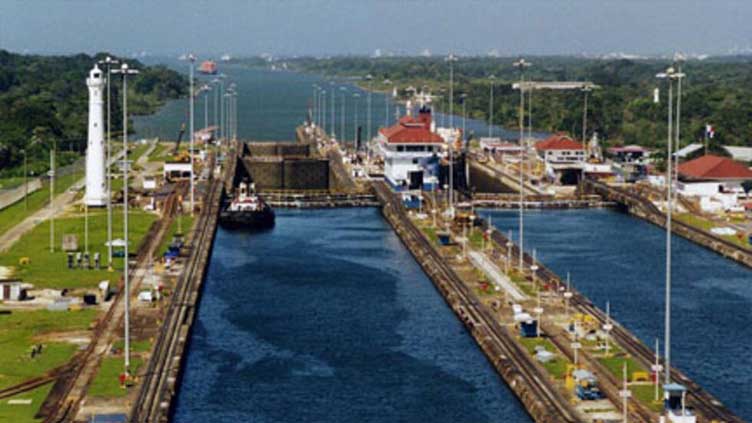Drought threatens to dry up crucial Panama Canal shipping link

World
Drought threatens to dry up crucial Panama Canal shipping link
(AFP) - Drought has forced authorities in Panama to reduce shipping traffic in the canal linking the Atlantic and Pacific as a water supply crisis threatens the future of the crucial waterway. Two artificial lakes that normally maintain the water level in the canal and refill the locks have been depleted by lack of rain.
Six percent of global shipping passes through the canal, mostly from the United States, China and Japan. The alternative is the long and frequently stormy route around the southern tip of South America.
In 2022 more than 14,000 ships carrying 518 million tons of cargo passed through the canal, contributing 3 billion euros to the Panamanian treasury.
The canal's highest point is 26 meters above sea level. It requires 200 million litres of water to allow the passage of a single vessel. That water flows into the sea, making the storage lakes essential.
According to the Panamanian Canal Authority, between 21 March and 21 April this year, the water level in the Alajuela storage basin fell by seven meters, reducing stored capacity by more than 10 percent.
Without water to fill the 12 locks, it is impossible to raise and lower vessels in transit. The authority has already had to limit the size of boats entering the canal system five times this drought season.
The largest ships, which pay the highest fees, are thus prevented from passing through, reducing the amount of revenue.
Panama Canal lowers maximum depth limit on ships due to drought https://t.co/wrDepbJ3RA pic.twitter.com/XRWaPoIZ92
Drought limits the canal's growth prospects
In 2019, water supplies dropped to just three billion cubic meters, short of the 5.25 billion needed to operate the canal.
Authorities fear this operational uncertainty could lead some shipping companies to favour other routes.
Canal administrator Ricaurte Vasquez recently acknowledged the water shortage was the main threat to shipping in the canal.
"Without a new reservoir that brings new volumes of water, this situation will remove the canal's capacity to grow," former administrator Jorge Quijano told the AFP news agency.
"It is vital to find new water sources, especially faced with the climate change we are seeing, not just in our country but all over the world."
The Panama Canal basin also supplies water to more than half of the country's 4.3 million population.
The shortages have caused water supply problems in several parts of the country, provoking protests.


